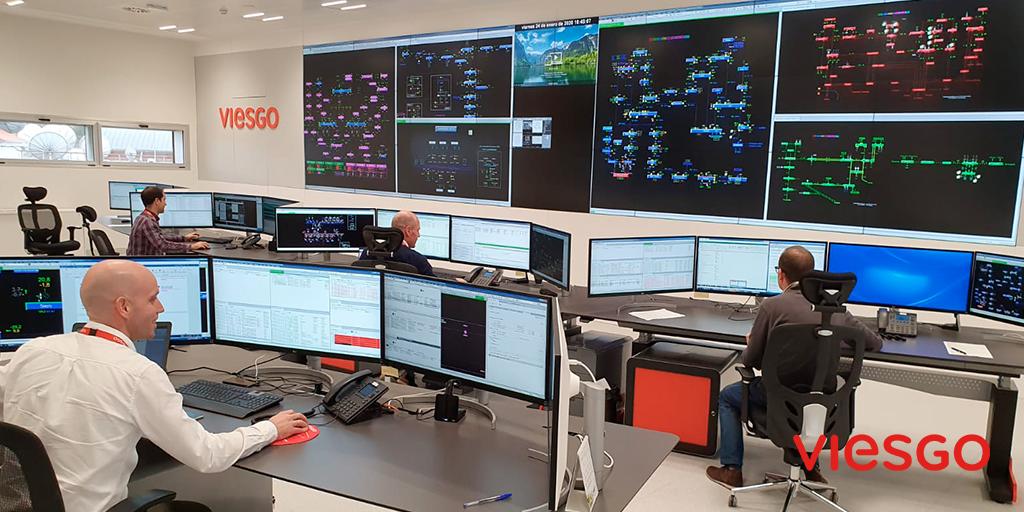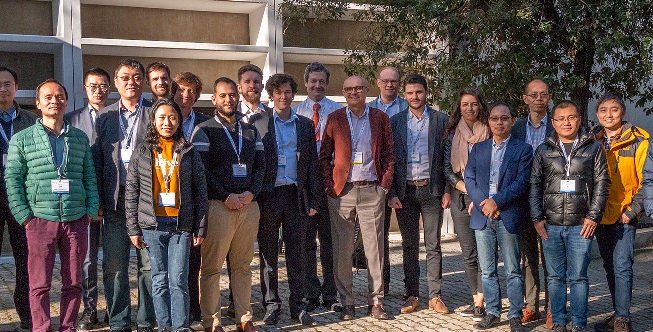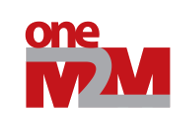Standards save lives: European Standardization in support of eCall
Road traffic accidents are an unfortunate consequence of road transport. In an ever more digitalised and connected society, ITS supports road safety through automated and real-time communication between vehicles and emergency services. Known as 112-eCall, this communication is already saving lives. eCall puts the occupants of the vehicle in direct communication with the emergency services and automatically provides the location of the accident, the vehicle involved, the numbers of passengers in a vehicle at the time of impact, and other key data, which enables the prompt and most appropriate emergency response. Understanding the content of a vehicle can help the emergency services send appropriate resources and minimise risks and disruption for road users. The benefits of this technology are widely acknowledged, but they can only be ensured by proper standardization. The relevant public and private actors have been working together and the development of appropriate CEN standards has already enabled the mandatory equipping of all new models of cars and light vans. Furthermore, eCall standards specifications are now also available for every other category of vehicle, enabling these to be implemented on a voluntary basis, or on mandated use where regulators deem this appropriate in order to reduce deaths and injuries.
Co-existence with third party assistance providers is also enabled through CEN standardization. This challenging topic will truly improve the survivability of all European road users, should they unfortunately be involved in a road traffic accident/emergency. To know more about eCall standardization, you can read the leaflet CEN and CENELEC recently published at this link.
The Agreement aims at facilitating the collaboration between CEN and CENELEC, two of the officially recognised European Standardization Organizations, and E.DSO, the interface between Europe’s Distribution System Operators (DSOs) and the European institutions. The objective is to ensure an appropriate exchange of knowledge as well as high quality and consensus-based support in the delivery of standards for the large-scale development of smart grid technologies.
The new Partnership Agreement is a step forward in this direction: through the Agreement, E.DSO will provide CEN and CENELEC with their technical and strategic expertise in the field of smart grids and energy distribution and bring a welcome industrial perspective to the work of standardization. Furthermore, the exchanges between the three organizations will bring lasting benefits to other related areas of ongoing work, such as ICT, cybersecurity, digitalization of the energy sector and e-Vehicles.
ETSI announced the launch of a new group dedicated to specifying the fifth generation of Fixed Network (ETSI ISG F5G). In a launch via an online press and industry briefing yesterday, various speakers expressed their view on the need for standardization in this area. We are entering an exciting new era of communications, and fixed networks play an essential role in that evolution alongside and in cooperation with mobile networks. Building on previous generations of fixed networks, the 5th generation will address three main use cases, a full-fiber connection, enhanced fixed broadband and a guaranteed reliable experience.
For home scenarios, emerging services such as Cloud VR (virtual reality) and AR (augmented reality) video streaming or online gaming introduce the necessity for ultra-broadband, extremely low latency and zero packet loss. Business scenarios such as enterprise Cloudification, leased line, or POL (Passive Optical LAN) require high reliability and high security. Other industry sectors have specific requirements on the deployment of fiber infrastructures including environmental conditions such as humidity, temperature or electromagnetic interference.
In a world where mobility is a cornerstone of global trade, work, tourism and leisure activities, providing efficient and safe transport infrastructure is a challenge. Connecting efficiently dense and complex cities or remotes regions requires a constant capacity of integrating new technologies. At the side of traditional game players, new actors of mobility emerge, sometimes with disruptive impact. CEN and CENELEC are engaged in facilitating the harmonized deployment of both traditional and innovative transport technologies, by improving compatibility, connectivity and sustainability.
In this context, CEN and CENELEC are proud to announce the launch of a new Joint Technical Committee, CEN/CLC/JTC 20, dedicated to hyperloop systems standardization. Hyperloop is a ground-based high-speed transportation system for passengers, living and/or non-living stock, in which vehicles are suspended through contactless means and travel inside a sealed, confined reduced pressure environment. With potential benefits on safety, time-saving, greenhouses gases emissions reduction, and economic value, this technology begins progressively to be on the spotlight.
As several European and International industries are investing in hyperloop systems with the interest of both private and public actors, European standardization is crucial to achieve a coherent roll-out of this new tool of mobility. Thanks to their extensive experience in transport standardization, CEN and CENELEC have recently been devoted to play a major role in the development of future hyperloop standards.
The EMPOWER project launches a consultation to create and update the advanced wireless 5G technology roadmap based on the analysis of trends for Beyond 5G in the respective research, standards, and spectrum communities.
The H2020 EMPOWER project is chartered with technology road mapping on 5G evolution in the timeframe 2020-2030. The technology road mapping is targeted at supporting the wireless research community in Europe, the USA, and globally, with trends and insights pertinent to their research on 5G evolution in the short, medium and long terms. The technology roadmap is also meant to identify the demand regarding the focus of the future advanced test platforms as explored in EMPOWER.
In this context, the EMPOWER project solicits your participation in the first consultation on the initial technology road mapping activities released by the project. The aim of this consultation is to collect and analyse all inputs and feedback received from the wireless research community in order to enrich the initial roadmap. The results of the forthcoming up-dates and up-grades will be integrated in the Roadmap Version 2.0 that will be circulated in due course to the wireless research community and presented in a future workshop.
ETSI Issues Two Major Standards for Emergency Calls: Next Generation 112 and Advanced Mobile Location
ETSI’s Emergency Communication Special Committee has recently released two major specifications, ETSI TS 103 479, for NG112, the next generation of European emergency services and ETSI TS 103 625, for the specific Advanced Mobile Location function. AML is already implemented in 22 countries worldwide following the publication of the first ETSI technical report TR 103 393.
NEXT GENERATION OF EMERGENCY CALLS: ETSI TS 103 479 specifies the core elements of the architecture for network independent access to emergency services, enabling interoperability of implementation for the Next Generation access to emergency services. Next Generation 112 (NG112) architecture enables multimedia communications (text, video, together with location or additional data) which is not possible on the current phone-based system. This will benefit citizens in emergency situations as well as emergency responders, network providers and other stakeholders.
ADVANCED MOBILE LOCATION: As more than 70% of emergency calls come from a mobile phone in Europe, the Advanced Mobile Location (AML) technology is essential to provide the most accurate location of the caller. With AML the phone's location capabilities (making use of GNSS, WIFI and cellular network information) are activated when an emergency number is dialed. The location obtained is then sent to a location endpoint managed by, or on behalf of, a national emergency service. These technologies can provide a location precision as good as 5m outdoors (and averaging to within circular areas of ~25 m radius for indoor locations), a significant improvement on existing cell coverage provided by mobile networks, which average (across the UK as an example) circular areas of about 1,75 km radius.
The ETSI Technical Committee on Electronic Signatures and Infrastructures (TC ESI) is pleased to release the ETSI TR 103684 technical report. This report addresses existing trust service infrastructures that operate in different regions of the world and their possible mutual recognition/global acceptance. The report identifies ways to facilitate cross recognition between EU trust services and trust services from other schemes. The trust services are based on ETSI standards and support the eIDAS Regulation (EU) No 910/2014.
ETSI TR 103 684 concentrates on existing PKI-based trust services, the most prevalent across the world. The study analyzed 37 global, sector and national public key infrastructure schemes and involved workshops held in 4 regions of the world in Dubai, Tokyo, Mexico City and New York. The methodology covered four main elements of a trust service: legal context, supervision and audit, technical standards, and trust representation. The study highlighted a strong interest with achieving mutual recognition of trust services with the EU in all the regions of the world visited.
Technological change is changing the global economy. To continue to prosper, European businesses have to be competitive. In this context, new digital skills are a major priority for the European industry, for it to compete successfully in the global, innovation-based economy. Indeed, the global race for talent requires the European workforce to acquire high-level skills and continuously improve them to boost employability and fuel competitiveness and growth. Unfortunately, in many industries, there are still increasing skills gaps and mismatches related to digital and high-tech key enabling technologies, which reduces their ability to benefit from the opportunities of digitalisation.
Addressing this gap is the objective of recently published EN 16234-1:2019 ‘e-Competence Framework (e-CF) - A common European Framework for ICT Professionals in all sectors - Part 1: Framework’. The standard provides a new framework to categorise e-skills, by referencing a list of 41 competences required in the Information and Communication Technology (ICT) professional work environment, using a common language for competences, skills and proficiency levels that can be understood across Europe.
The definitions presented in the document are designed to apply to all actors involved in the ICT sector, such as ICT service companies and professionals, managers and human resource (HR) departments, vocational education institutions and training bodies, professional associations, accreditation, validation and assessment bodies, and market analysts and policy makers, providing them with a commonly recognised measure of ICT talent.
The ETSI Multi-access Edge Computing Industry Specification Group is pleased to announce the release of two major reports as part of its Phase 2 work. The report ETSI GR MEC 027 studies the impact of alternative virtualization technologies. The second report, ETSI GR MEC 024, examines network slicing on edge computing systems.
ETSI GR MEC 027, a report on alternative virtualization technologies, identifies the additional support that needs to be provided when MEC applications run on containers. Building on related work developed by the ETSI NFV group, it defines the usage of such technologies in a MEC environment, the impact on implementation of MEC systems and applications and the potential updates of future ETSI MEC standards. The results and conclusion of this report highlight that most of the ETSI MEC specifications are virtualization-technology agnostic; this leads to very few updates of existing standards.
ETSI GR MEC 024 identifies the MEC functionalities to support network slicing and the impact on future ETSI MEC specifications. It provides important use cases and examples of how network slicing may be addressed in edge computing systems. One of them includes the description, use case recommendations and evaluation of a network slice integrating MEC applications and using 3GPP elements. Other use cases address how you can have multiple tenants in a network slice or how efficient an end-to-end multi-slice support for MEC-enabled 5G deployments can be. Four network slicing concepts have been described and two prioritized for the time being.
oneM2M, the global standards body for the Internet of Things (IoT), has announced that it is working with the IoT Connectivity Alliance (ICA), an open STD alliance initialised by Alibaba Group, Alibaba Cloud, the data intelligence backbone of Alibaba Group, and IoT partners, to widen industry collaboration and speed up the development of universal IoT standards.
Under the agreement, the two organisations will work closely together and provide access to each other’s specifications, both in draft and final form. Invitations to each of the forum’s member meetings will also be extended, allowing increased collaboration between oneM2M member companies and ICA members to further advance the development of new industry standards.















